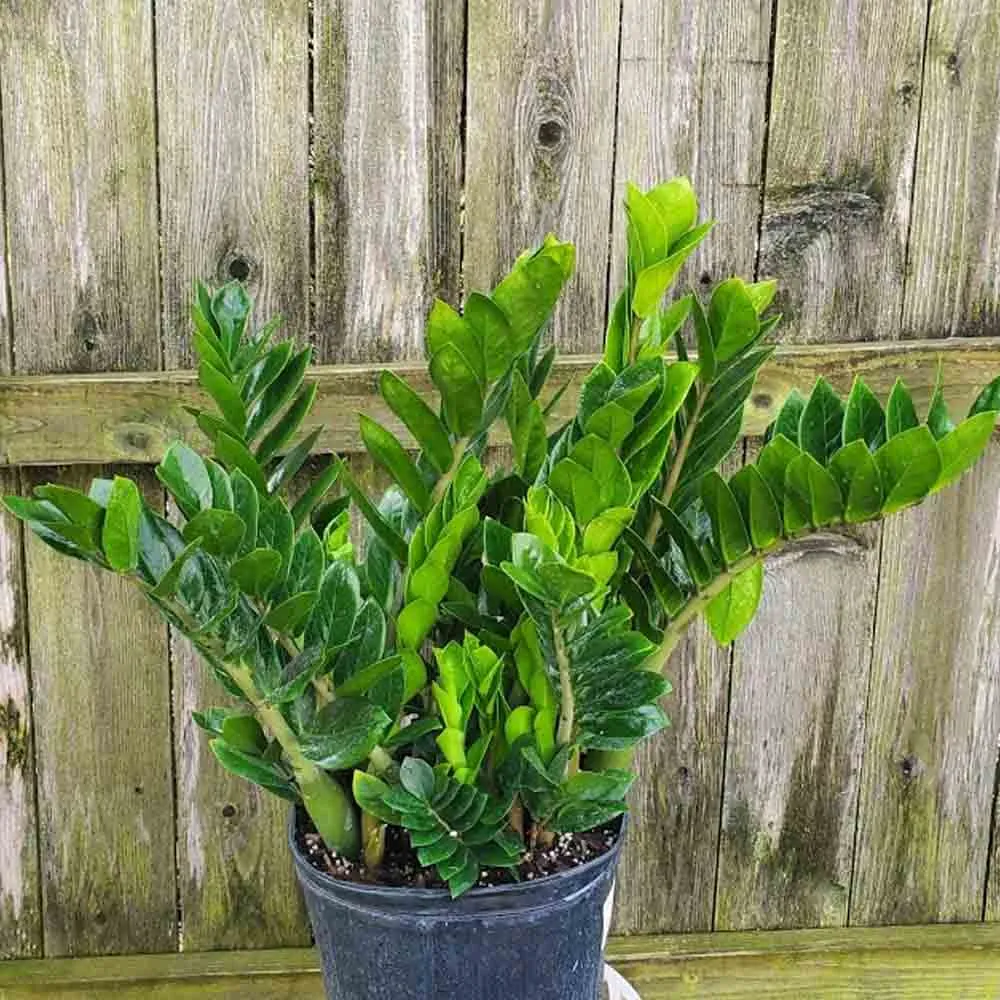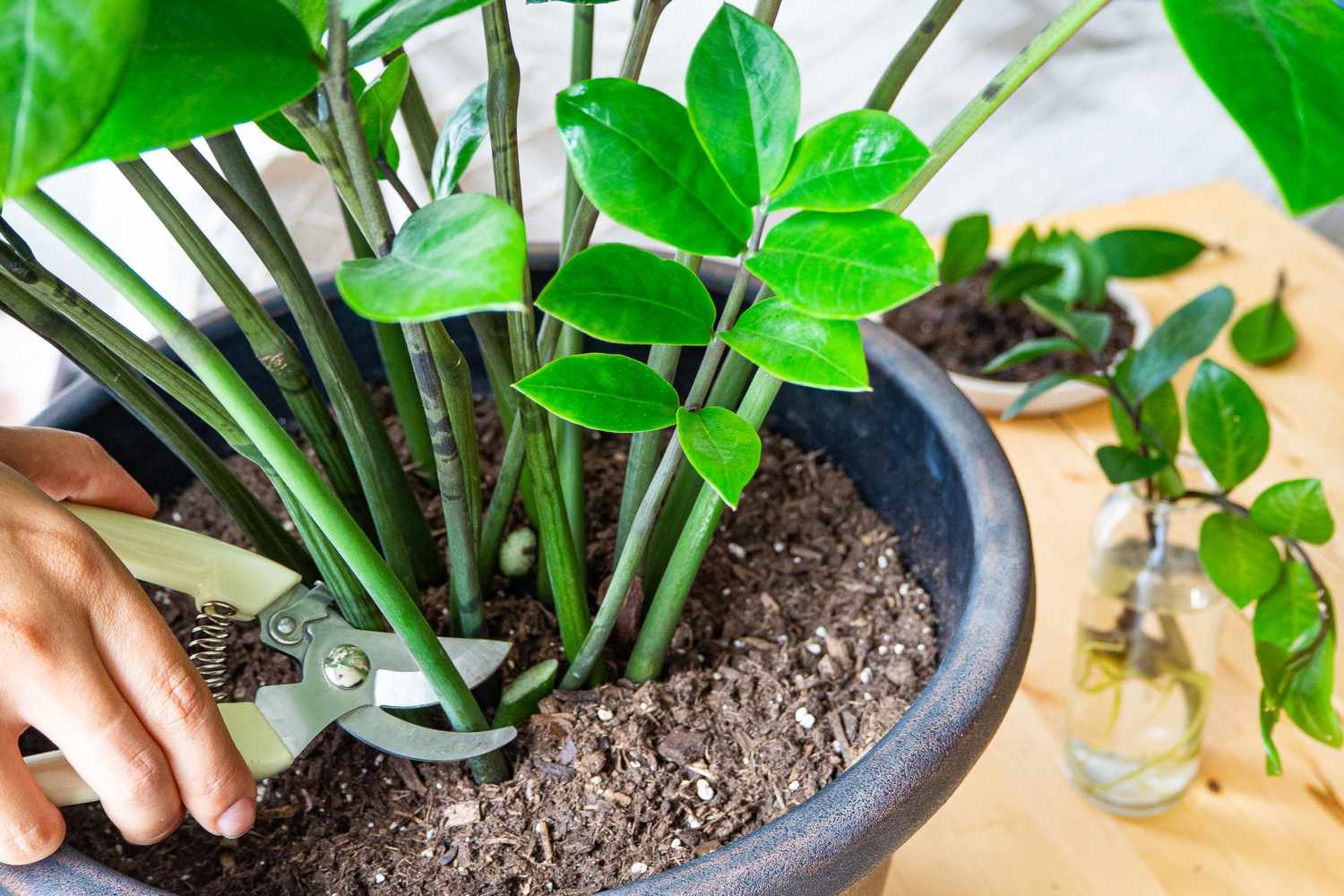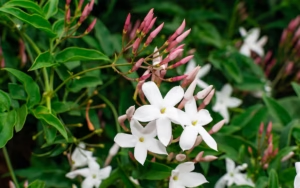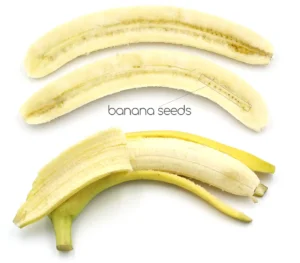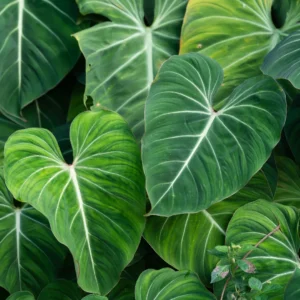The ZZ Plant, also known as the Zanzibar Gem or Zamioculcas zamiifolia, has become a popular choice for houseplant lovers. This resilient, attractive plant is known for its shiny green leaves, low maintenance, and ability to thrive even with neglect. Whether you’re new to houseplants or a seasoned indoor gardener, the ZZ Plant is an excellent addition to your indoor garden.
In this blog post, you’ll learn everything you need to know about how to grow and care for ZZ Plants, from propagation to common problems. Let’s dive in!
How to Grow ZZ Plants
Ideal Growing Conditions for ZZ Plants
ZZ Plants are known for being adaptable and low-maintenance, but to help them thrive, provide the right environment:
- Light: ZZ Plants prefer indirect light. While they can survive in low-light conditions, they will grow more slowly. Avoid direct sunlight, as it can scorch their leaves.
- If you have a dim room, a ZZ Plant is perfect. They can even grow well under fluorescent lights, such as in offices or bathrooms.
- South-facing or east-facing windows with sheer curtains are ideal locations.
- Soil: Use a well-draining potting mix. A mix with sand or perlite works great for ZZ Plants as it prevents root rot.
- A cactus or succulent potting mix works well since it drains quickly.
- You can also create your own blend by mixing equal parts potting soil, perlite, and sand.
- Temperature: These plants thrive in temperatures between 65°F to 75°F (18°C to 24°C). Avoid placing them near cold drafts, air conditioners, or heaters.
- If temperatures drop below 50°F (10°C), the plant may start to suffer and show signs of stress.
- Humidity: ZZ Plants are not picky about humidity. They do well in normal household humidity, but they can tolerate drier air better than most tropical plants.
- In particularly dry environments, mist the leaves occasionally or use a small humidifier.
Watering Your ZZ Plant
ZZ Plants are drought-tolerant and store water in their rhizomes. This allows them to survive periods without water. Follow these watering tips:
- Water sparingly. Allow the soil to dry out completely between waterings. Use the “finger test”—stick your finger into the soil about 1-2 inches deep. If it’s dry, it’s time to water.
- Overwatering can cause root rot, so always check the soil moisture before watering.
- How to water: Pour water slowly around the base of the plant until it drains out of the bottom. Avoid letting the plant sit in standing water.
- In winter, reduce watering even further as the plant enters dormancy. Water every 4-6 weeks during this time.
- Pro tip: If you’re unsure, it’s better to underwater than overwater.
Fertilizing ZZ Plants
While ZZ Plants don’t need frequent feeding, occasional fertilizing helps boost growth and keeps the plant healthy:
- Use a balanced liquid fertilizer diluted to half strength.
- Feed your plant once every 3-4 months during the growing season (spring and summer).
- Avoid fertilizing during fall and winter when the plant’s growth slows.
- Too much fertilizer can cause brown tips, so be cautious not to overfeed.
Types of ZZ Plants
Although the classic green ZZ Plant is the most common, there are a few other varieties you can grow:
- Zamioculcas zamiifolia (Classic ZZ Plant): The traditional variety with dark green, glossy leaves. It is the most widely available and easiest to care for.
- Zamioculcas zamiifolia ‘Raven’: Known for its stunning deep purple-black leaves. Young leaves start green and turn dark as they mature, creating a dramatic contrast.
- Zamioculcas zamiifolia ‘Zenzi’: A dwarf variety of ZZ Plant with compact, curled leaves. It’s ideal for small spaces or tabletops.
- Variegated ZZ Plant: This rare variety features green leaves streaked with white or yellow variegation, giving it a unique and striking look. It may require slightly brighter light to maintain the variegation.
Each type of ZZ Plant shares the same care requirements, making them easy to grow and maintain.
Pruning
ZZ Plants grow slowly and rarely require pruning. However, you may need to tidy up your plant to keep it looking its best:
How to Prune a ZZ Plant
- Remove yellow or damaged leaves: If you notice yellow, brown, or withered leaves, snip them off at the base using clean, sharp scissors. This helps the plant focus its energy on healthy growth.
- Trim for shape: If some stems are growing too long, cut them back to maintain the plant’s compact shape. Trim just above a node (joint) for a clean cut.
- Remove old growth: Occasionally, old stems may die off naturally. Prune these to make room for new growth and to improve the plant’s appearance.
Always sterilize your pruning tools before and after use to prevent spreading diseases. Use rubbing alcohol or a diluted bleach solution to disinfect the blades.
How to Propagate ZZ Plant
ZZ Plants are easy to propagate, making them perfect for sharing with friends or expanding your indoor garden.
Methods of Propagation
- Stem Cuttings:
- Cut a healthy stem close to the base using clean scissors or pruners.
- Allow the cut end to dry for 1-2 days to prevent rot.
- Place the stem in water or directly into well-draining soil.
- If propagating in water, change the water weekly to keep it fresh. Roots typically appear in 4-6 weeks.
- Once roots form, transfer the stem to soil.
- Leaf Cuttings:
- Remove individual leaves from a healthy stem.
- Let the cut ends callous over for a day.
- Plant the leaves in moist, well-draining soil, burying the tips slightly.
- Be patient, as roots may take several weeks or months to form.
- Division:
- Remove the plant from its pot.
- Gently divide the rhizomes (underground stems) into sections using your hands or a clean knife.
- Each section should have at least one stem and rhizome.
- Replant each section in a new pot with fresh, well-draining soil.
Tips for Successful Propagation
- Place cuttings in a warm location with bright, indirect light.
- Use small pots to avoid excess moisture buildup.
- Be patient—ZZ Plants are slow to root and grow. It may take several months to see significant progress.
Potting and Repotting ZZ Plant
When to Repot ZZ Plant
ZZ Plants grow slowly, so they don’t need frequent repotting. Repot your ZZ Plant every 2-3 years or when:
- Roots start to grow out of the drainage holes.
- The plant becomes root-bound and growth slows.
- The soil becomes compacted and loses its ability to drain properly.
How to Repot a ZZ Plant
- Choose a new pot that is 1-2 inches larger than the current pot. Ensure it has drainage holes.
- Use fresh, well-draining potting soil, such as a succulent or cactus mix.
- Carefully remove the plant from its old pot by loosening the soil around the edges.
- Gently shake off excess soil and inspect the rhizomes for rot or damage.
- Place the plant in the new pot, positioning the rhizomes just below the soil surface.
- Fill in with fresh soil, pressing it lightly to secure the plant.
- Water lightly and let the plant settle in a bright, indirect light location.
Repotting helps refresh the soil, improve drainage, and promote healthy growth.
Common Pests and Plant Diseases
While ZZ Plants are relatively pest-resistant, they can sometimes encounter problems:
Common Pests
- Mealybugs: White, cotton-like pests that suck sap from the plant.
- Solution: Wipe them off with a cotton swab dipped in rubbing alcohol.
- Spider Mites: Tiny pests that create webbing and cause leaf discoloration.
- Solution: Wash the leaves with soapy water and increase humidity levels.
- Scale Insects: Small, brown pests that attach to the stems.
- Solution: Remove manually and treat with insecticidal soap or neem oil.
Common Diseases
- Root Rot: Caused by overwatering or poor drainage.
- Solution: Allow the soil to dry completely and ensure the pot has drainage holes.
- Leaf Spot: Yellow or brown spots caused by fungal infections.
- Solution: Trim affected leaves, reduce humidity, and avoid splashing water on the foliage.
Common Problems With ZZ Plant
Even with proper care, ZZ Plants can face a few common issues:
- Yellow Leaves:
- Cause: Overwatering is the most common culprit. If the roots stay wet for too long, it leads to root rot, which eventually turns the leaves yellow.
- Solution: Let the soil dry out completely before watering again. Ensure the pot has proper drainage, and trim away damaged roots if rot has already set in.
- Brown Tips on Leaves:
- Cause: This can be due to underwatering, low humidity, or over-fertilizing.
- Solution: Check the soil moisture and adjust your watering schedule. If you fertilize, do so sparingly—only during the growing season and never in excess.
- Wilting or Drooping Stems:
- Cause: Either overwatering or extreme underwatering can cause the stems to droop.
- Solution: Assess the soil. If it’s too soggy, allow it to dry out completely before watering again. If it’s bone dry, give your plant a thorough drink.
- Slow Growth:
- Cause: ZZ Plants are naturally slow growers, but extremely low light, nutrient deficiency, or overcrowding can slow growth even more.
- Solution: Place the plant in a spot with bright, indirect light. Repot if the roots are too crowded, and consider fertilizing sparingly during the growing season.
FAQ
Are ZZ Plants Toxic to Cats?
Yes, ZZ Plants are toxic to cats if ingested. The plant contains calcium oxalate crystals, which can irritate the mouth, tongue, and throat of pets. Symptoms include drooling, vomiting, and difficulty swallowing. Keep your ZZ Plant out of reach of curious cats, and consult a veterinarian if your pet consumes any part of the plant.
Are ZZ Plants Toxic to Dogs?
Yes, ZZ Plants are also toxic to dogs for the same reason—they contain calcium oxalate crystals. If a dog chews or ingests the plant, it can experience mouth irritation, drooling, and vomiting. Keep the plant in a safe location away from pets, and seek veterinary advice if ingestion occurs.
What Happens if You Water Too Much on ZZ Plants?
Overwatering is the most common problem with ZZ Plants. When overwatered, the soil becomes soggy, and the roots are deprived of oxygen, leading to root rot. Early signs include yellowing leaves, mushy stems, and an unpleasant odor from the soil. To fix this:
- Stop watering immediately.
- Allow the soil to dry completely.
- If necessary, repot the plant, trimming off any rotting roots.
What Happens if I Touch a ZZ Plant?
While ZZ Plants are safe to touch, they contain calcium oxalate crystals that can cause minor skin irritation in sensitive individuals. You might experience mild itching, redness, or discomfort if you come into contact with the sap. If this happens, wash your hands thoroughly with soap and water. Wearing gloves when pruning or handling the plant can prevent any irritation.
How Often to Water ZZ Plant?
Water your ZZ Plant only when the soil has dried out completely. In most indoor environments, this means watering every 2-3 weeks during the growing season (spring and summer) and every 4-6 weeks in fall and winter. Always use the “finger test” to check the soil moisture before watering. Overwatering is far more dangerous than underwatering, so it’s better to err on the dry side.
Final Thoughts
The ZZ Plant is a nearly indestructible houseplant that thrives with minimal care, making it perfect for beginners and busy plant owners. With its striking glossy leaves, low water needs, and ability to tolerate low light, it’s no wonder the Zanzibar Gem has earned a spot in homes, offices, and plant collections worldwide.
By following the care tips in this guide—like proper watering, light exposure, and occasional pruning—you can enjoy a healthy and vibrant ZZ Plant for years to come. Whether you’re propagating new plants, troubleshooting common problems, or simply admiring its beauty, the ZZ Plant is truly a gem in the indoor gardening world.
Now that you know how to grow and care for a ZZ Plant, it’s time to add this versatile and resilient plant to your indoor garden. Happy planting!
Read also: https://techcrunchs.net/how-to-grow-amaryllis-a-complete-guide/

